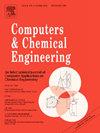Comparing generative process synthesis approaches with superstructure optimization for the conception of supercritical CO2 Brayton cycles
IF 3.9
2区 工程技术
Q2 COMPUTER SCIENCE, INTERDISCIPLINARY APPLICATIONS
引用次数: 0
Abstract
In process synthesis, while heuristic-based approaches are most often used for proposing relevant alternatives (that must then be thoroughly analyzed), this strategy may not be the most efficient. When it comes to the search for innovative processes, prior domain knowledge may be scarce or may not effectively exploit the properties contributing to the process novelty. Generative synthesis approaches that can freely explore the search space and that do not rely on any previous knowledge, have been proposed in the literature. Yet, a lack of benchmarks on complex problems strongly hinders their use. In this work, we address this gap by comparing two generative approaches, based on Evolutionary Programming and Machine Learning, to a superstructure optimization (which serves as a baseline). They are applied to the synthesis of supercritical CO2 Brayton cycles. Despite starting with no field of expertise, the generative approaches not only manage to identify multiple known heuristics of the domain, but also a counter-intuitive and new way of increasing the efficiency of sCO2 cycles — by expanding the fluid at lower temperatures. The approaches’ use-cases are discussed, based on the amount of computational resources necessary, implementation difficulties and quality of the results.

超临界CO2布雷顿循环概念生成过程综合方法与上层结构优化方法的比较
在过程综合中,虽然基于启发式的方法最常用于提出相关的替代方案(然后必须彻底分析),但这种策略可能不是最有效的。当涉及到寻找创新过程时,先前的领域知识可能是稀缺的,或者可能无法有效地利用有助于过程新颖性的属性。文献中已经提出了可以自由探索搜索空间并且不依赖于任何先前知识的生成合成方法。然而,缺乏复杂问题的基准极大地阻碍了它们的使用。在这项工作中,我们通过比较基于进化编程和机器学习的两种生成方法来解决这一差距,并将其与上层建筑优化(作为基线)进行比较。应用于超临界CO2布雷顿循环的合成。尽管没有专业知识,但生成方法不仅能够识别该领域的多个已知启发式,而且还能通过在较低温度下膨胀流体来提高sCO2循环效率,这是一种反直觉的新方法。基于所需计算资源的数量、实现难度和结果的质量,讨论了这些方法的用例。
本文章由计算机程序翻译,如有差异,请以英文原文为准。
求助全文
约1分钟内获得全文
求助全文
来源期刊

Computers & Chemical Engineering
工程技术-工程:化工
CiteScore
8.70
自引率
14.00%
发文量
374
审稿时长
70 days
期刊介绍:
Computers & Chemical Engineering is primarily a journal of record for new developments in the application of computing and systems technology to chemical engineering problems.
 求助内容:
求助内容: 应助结果提醒方式:
应助结果提醒方式:


